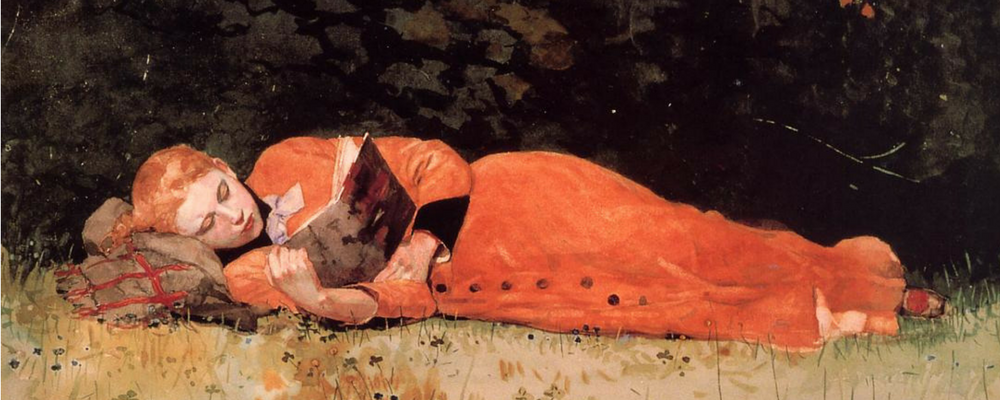
On some level, everyone thinks they know what it means to listen. You pay attention (at least a little). You allow other people to speak. You don’t interrupt. When they finish, you know what they said. Most of us acknowledge that it is important to listen – if only to be polite. But listening can be much more than that when it goes beyond just allowing others to speak and moves toward what the philosopher Hans-Georg Gadamer called the “miracle of understanding.” What happens to our own ideas and ways of thinking when we listen for understanding?
Read More

Happy Friday! We’ve scoured the web for thought-provoking articles and essays for you to enjoy over the weekend.
In the Scientific American, the University of Missouri’s Director of the Master of Public Health program Lise Saffran writes on the crucial role of storytelling in searching for truth. When confronted with facts, we often filter out evidence that contradicts our cultural predispositions. But when we hear a subjective story and feel a personal and authentic connection with someone, are we more willing to override our bias?
Read More

Imagine yourself on an operating table. It’s a routine procedure, but you have to get it done. You choose the best doctor and the best hospital and you trust the system to deliver perfect care. It’s the last procedure of the day and the – very human – doctor is tired. But you’re comforted by the nurses and other healthcare professionals in the room: the system will protect you.
Or will it?
Read More

Forbes outline nine leadership lessons about workplace diversity and inclusion that we can learn from this year’s top-grossing Oscar nominee “Hidden Figures.” One tip from the movie that leaders can put into action? Removing obstacles for your workers:
“After realizing that Katherine Goble (played by Taraji P. Henson) had to spend half an hour walking across Langley each time she needed to use the bathroom, Al Harrison (played by Kevin Costner) uses a crowbar to smash down the sign that identifies the only bathroom at Langley reserved for women of color. In so doing, he effectively removes a significant obstacle to make Goble’s work easier. And, as is often the case, by identifying and fixing the problem for one person, he removed an obstacle that was impacting a large number of talented people.”
What other obstacles can we remove to foster a more diverse and inclusive workplace?
Read More

My first college-level literature class was called “Writing the Essay,” a required seminar meant to teach the basics of crafting an argument rooted in textual evidence. We would write three essays over the course of the class in response to novels, essays and plays we read. I entered the seminar with a chip on my shoulder. I’d always been a bookworm; I knew how to read closely, and I was confident in my writing. It’d be an easy A.
Oh, how wrong I was.
Read More

At first glance, Maria Semple’s Where’d You Go, Bernadette might not seem like it would merit four weeks of discussion. The novel has a bright cover, featuring a sunglasses-bedecked woman and blurbs from the New York Times and young adult author John Green. “Divinely funny” and “A moving, smart page turner . . . the funniest novel I’ve read in years,” these two sources respectively proclaim. A “funny” story told from the perspective of a fifteen-year old girl, Where’d You Go, Bernadette seems like it is more appropriate for a day at the beach than a law firm’s meeting space or a college course.
And yet, the novel is much more than a coming-of-age comedy. What can popular literature teach us about self-reflection and connection with others?
Read More

Writing for the Harvard Business Review Amber Lee Williams addresses why it’s important to speak up when we witness instances of bias in the workplace: “Failure to acknowledge and address bias or offensive behavior validates the conduct and may create an impression that the behavior is acceptable, and even to be expected, in the workplace. Moreover, normalizing offensive conduct in this subtle manner tends to have a chilling effect on other potential dissenters, and communicates to those who are offended, regardless of whether they are targets of the behavior, that their perspectives and voices are not valued.”
Williams offers advice for how to speak up most effectively, and emphasizes that we should “create the opportunity for dialogue.” How do you foster dialogue at work?
Read More

At Books@Work, one of our greatest pleasures is our discovery of books and stories that inspire vibrant conversation, different perspectives and metaphors to life and work. Here are a few we and our participants have been enjoying recently. Why not try one and start a conversation yourself?
Read More

In the maelstrom of New Year’s media activity, the pervasive hand wringing about the past year and angst about the future seem unavoidable. At a recent holiday gathering, a family member suggested that as an antidote, we might each try to think of a word or two – a mantra of sorts – that might guide each of us in the coming year. After playing with that idea for the past week, I keep coming back to the art of critical thinking as my mantra for 2017.
“Critical thinking” is one of those phrases that gets used often, but that seems to defy definition. Why do we struggle to both define and implement critical thinking in our daily lives?
Read More









